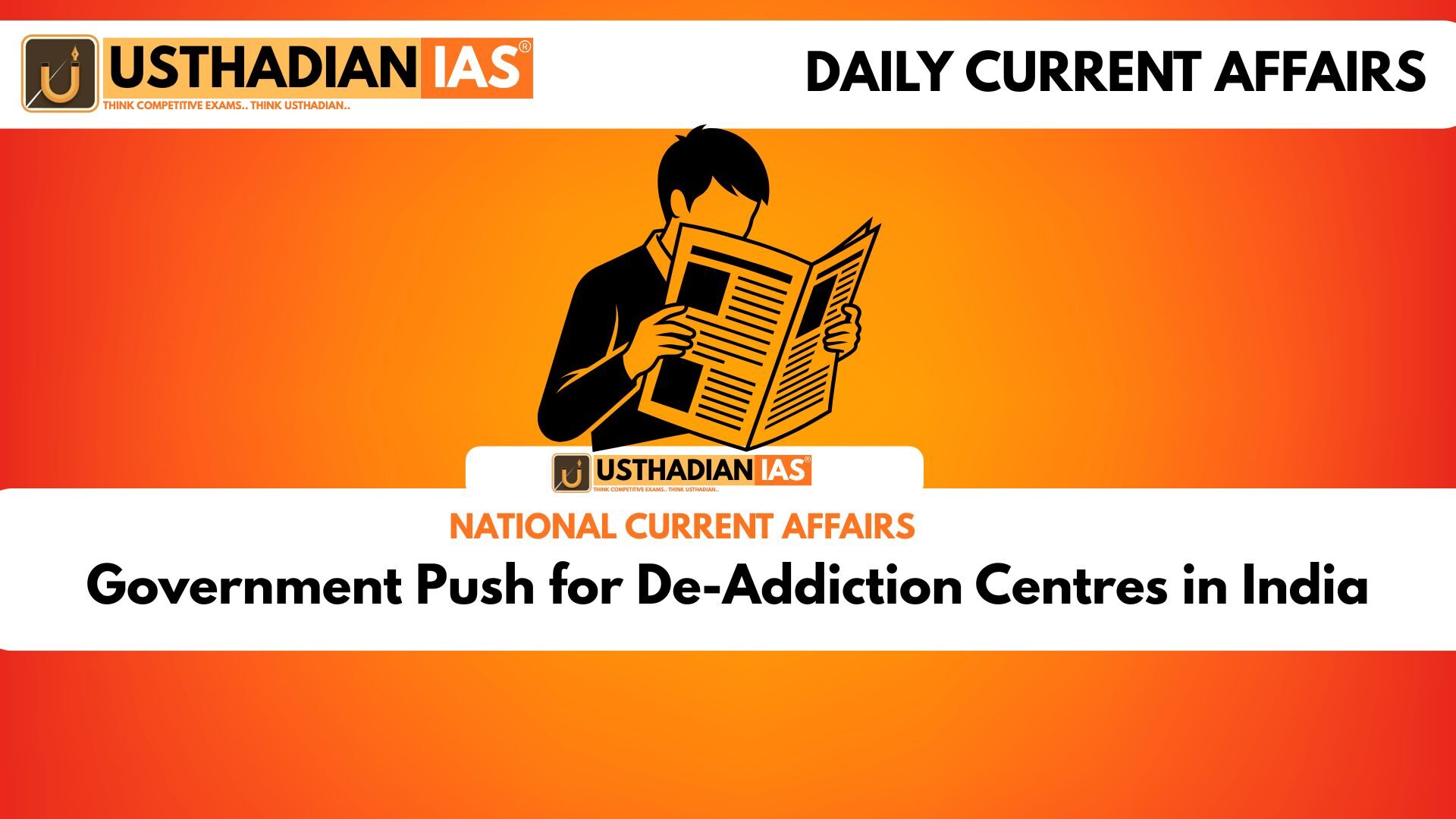India’s de-addiction plan
Government Push for De-Addiction Centres in India: The Government of India is stepping up its efforts to fight substance abuse by setting up District De-Addiction Centres (DDACs) in 291 gap districts. These are districts that do not have sufficient facilities for treating people with drug dependence. This move is under the National Action Plan for Drug Demand Reduction, which is led by the Ministry of Social Justice and Empowerment.
What DDACs will offer?
These centres will act as full-time rehabilitation and treatment hubs. Each DDAC will have administrative offices, in-patient wards, and spaces for community outreach. Depending on the population, each centre will treat 15 to 30 individuals at a time. All operations will follow strict norms to ensure the quality of services.
Government-supported efforts
Beyond DDACs, the government already runs several facilities under the national action plan. These include:
- 350 Integrated Rehabilitation Centres for Addicts (IRCAs)
- 74 Outreach and Drop-in Centres (ODICs)
- 46 Community-based Peer Led Initiatives (CPLIs)
- 124 functioning DDACs
This layered structure helps address addiction from prevention to rehabilitation.
Alarming substance use data
A new national survey is being planned to assess how widespread substance use is across India. Previous data pointed to nearly 7 crore adults and 1.18 crore children and teenagers using psychoactive substances. These figures show the deep-rooted issue and highlight the need for customised solutions based on region-specific data.
Role of NGOs and start-ups
To make the mission more inclusive, the government has invited proposals from NGOs and start-ups. These organisations should have at least two years of experience in drug treatment or related fields. Proposals need to be sent in by June 30. Their role includes holding awareness drives, prevention education, and risk mitigation, especially in vulnerable areas.
Prevention and early action
Prevention is a core focus of the DDACs. The plan includes educating people about the risks of substance use, training peer educators, and identifying early cases. Individuals identified will be referred to nearby rehabilitation centres for timely help. Prevention methods often involve school programs, youth clubs, and community sessions.
High-need areas
Among all states, Chhattisgarh stands out with 31 of its 33 districts listed as gap districts. Other states with a significant number of such districts include Madhya Pradesh, Gujarat, and Bihar. These findings stress the importance of urgent and targeted interventions.
Static Usthadian Current Affairs Table
| Topic | Detail |
| Full Form of DDAC | District De-Addiction Centre |
| National Action Plan | Drug Demand Reduction (NAPDDR) |
| Ministry in charge | Ministry of Social Justice and Empowerment |
| Top state with gap districts | Chhattisgarh (31 districts) |
| NGO Proposal Deadline | June 30, 2025 |
| Existing Facilities | 350 IRCAs, 74 ODICs, 46 CPLIs, 124 DDACs |
| Survey Data (last round) | 1.18 crore children, 7 crore adults affected |
| Key Prevention Tools | Peer-led initiatives, community awareness, school education |
| Constitutional Reference | Directive Principles of State Policy – Article 47 (prohibits intoxication) |
| Famous Rehab Day | International Day Against Drug Abuse – June 26 |








